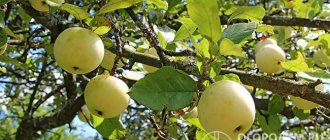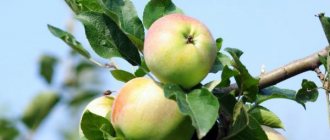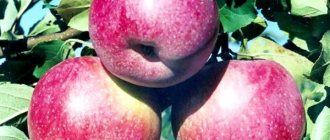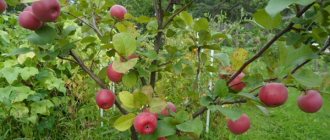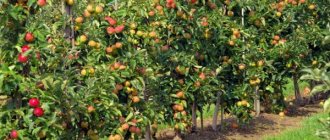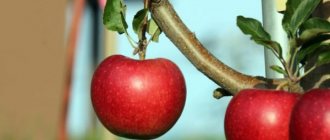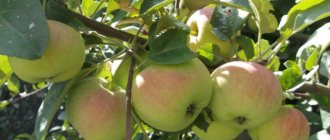These apple trees are popular in temperate latitudes, in the middle zone of our country. The Moscow apple tree variety is winter-hardy later, does not cause problems in care, and has a long shelf life. The tree is resistant to the main disease of all apple trees - scab.
Moskovskoe later is an apple tree, the description of which became available to gardeners in 1961. The variety belongs to the selection of Moscow State University. M. V. Lomonosov. It was obtained by crossing two well-known varieties - Northern Signal and Brown New. Its author was S.I. Isaev. In 2001 it was zoned.
Moscow apple tree later: description of the variety
This is a representative of late (winter) ripening varieties. The first fruits can be collected at the very end of September or early October. They have surprisingly good keeping quality. With proper care, they remain in excellent condition until the next year's harvest. It is recommended to store them in basements and cellars at temperatures from +2 to +6 °C. Sudden temperature changes must be avoided.
The late Moscow apple tree is pollinated. The following varieties act as pollinators:
- Knight.
- Synap.
- Orlovsky.
- Bogatyr.
- Moscow winter.
Today, the late Moscow apple tree is widespread in the Central region and neighboring regions. This variety is successfully grown in Belarus and Ukraine.
Ripening and fruiting of Moscow late
Beginning of fruiting
Despite the rapid growth of the tree, the first flowers appear on it only in 5-7 years. It is recommended to tear them off completely, so the subsequent harvest will be much better and the fruits will be larger. They practice regulation of fruiting in subsequent years. To do this, apple ovaries are cut off by 35-50%, thinning them out. It is customary to harvest the crop no earlier than the sixth year.
Flowering time
The buds on Moskovsky bloom only in the middle or towards the end of May. After a long, very cold winter, flowering can begin even in June. It lasts approximately 12-16 days. The buds may be pinkish, but the flowers themselves are snow-white, sometimes with the slightest, barely noticeable pink tint. They are large, beautiful, fragrant, cover the branches tightly, and are collected in inflorescences.
Fruiting and growth
Trees can grow 45-60 centimeters per year in good conditions. They quickly reach their maximum height and already produce an almost full harvest in 9-12 years. The active life span of apple trees is more than 50-70 years, so you can expect great returns from your garden.
Harvest ripening is later, fruits are most often ready for picking at the end of September or beginning of October. Technical (removable) maturity can be judged by the presence of a not very dense, bluish waxy coating. It is easy to transport apples in ordinary wooden or plastic boxes. The fruits can be stored in a good cellar or refrigerator until the next harvest, without any loss of their commercial and consumer qualities.
Top dressing
- Dolomite flour.
- Eggshells (calcium-containing complexes).
- Humus.
- Manure.
- Compost.
- Superphosphate.
- Mineral and nitrogen complexes.
- Chicken or pigeon droppings.
- Ammonium nitrate.
What to do if it doesn’t bloom or bear fruit
- Wrap up.
- Limit or increase watering.
- Remove insects.
- Cure diseases.
Why do apples fall
- Weather troubles.
- Early frosts.
- Pests or diseases.
- Overripeness.
Leave a review about the Moscow apple tree variety later so that novice gardeners will not have any questions about cultivating trees.
Previous
Apple tree varieties
